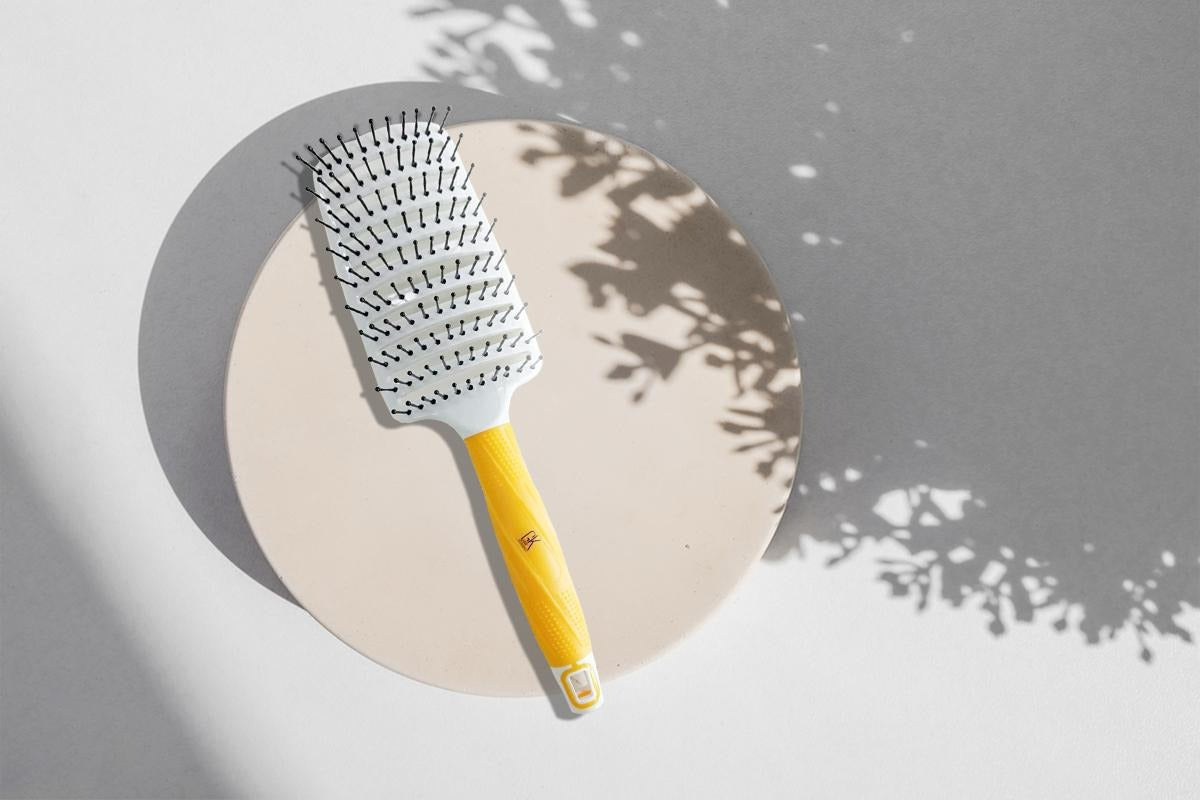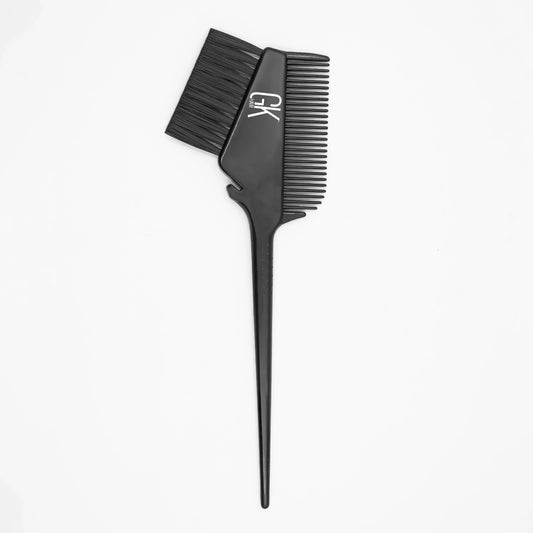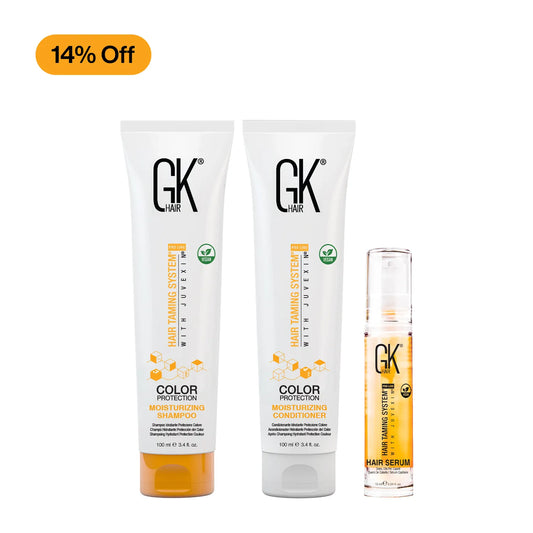How to Clean Hair brushes? Cleaning your hairbrush is an important part of maintaining healthy, beautiful hair. A dirty brush can have a negative effect on the health of your scalp and locks, leading to frizziness, breakage, and other problems. Fortunately, cleaning a hairbrush doesn't take long and isn't difficult if you know the right way to do it. In this article, we will discuss why it's important to clean your brush regularly and provide step-by-step instructions for getting the job done quickly and easily. So read on for everything you need to know about keeping your hairbrush in tip-top condition!
The Right Way to Clean a Hairbrush
Keeping your hairbrush clean is not only important for maintaining a healthy scalp and hair, but it can also help extend the life of your favorite styling tools. Cleaning a hairbrush may seem like an intimidating task. However, with just a few simple steps, you can keep your brush in top condition. With the right cleaning solution and scrubbing techniques, you'll be able to remove stubborn product residue, oils, dirt, and bacteria from the bristles while trimming away excess hairs that could damage them over time. Follow along as we explain The Right Way to Clean a Hairbrush!
Remove Excess Hair
Removing excess hair from a hairbrush is an important part of the cleaning process. To do this:
- Begin by using a small comb to detangle any matted or knotted strands in the brush gently.
- After this, use a pair of scissors to carefully snip away any remaining hairs that won't come out with the comb.
- Exercise caution when trimming the hairs, as it's easy to accidentally damage the bristles on the brush.
The purpose of removing excess hair from a hairbrush is to keep its bristles in optimal condition for styling and grooming purposes. The bristles act like tiny teeth, designed to grab onto individual strands of hair while brushing and styling. By removing old strands of hair that are caught in the bristles, you ensure that no debris interferes with the brush's ability to work efficiently and effectively. Additionally, regularly trimming away accumulated hair can help extend the life of your brush, as overly packed and tangled bristles could lead to breakage over time.
Make a Cleaning Mixture
Keeping your hairbrush clean is essential for maintaining healthy hair and scalp. Over time, product buildup, oil, and dirt can accumulate in the bristles, making your brush less effective. A simple cleaning mixture can help remove residue and bacteria, ensuring your brush stays fresh and hygienic.
Make a Powerful Cleaning Mixture
To create an effective cleaning solution, mix equal parts baking soda and white vinegar in a bowl. The amount will depend on the size of your brush, so adjust accordingly.
Soak and Scrub for a Deep Clean
- Dip your hairbrush into the solution and let it soak for up to 30 minutes. This will help loosen dirt, oils, and product buildup.
- After soaking, rinse with warm water and use an old toothbrush or a brush cleaner to remove any remaining residue from the bristles.
Why This Works
The baking soda and vinegar combination dissolves stubborn grime, eliminates bacteria, and prevents buildup that could lead to scalp irritation or breakouts. Regularly cleaning your brush is a simple but effective step toward healthier hair and scalp!
Scrub Away Buildup for a Fresh, Clean Brush
Scrubbing your hairbrush is a crucial step in removing dirt, oils, and bacteria.
How to Scrub Your Hairbrush
- Use a nail brush or old toothbrush to gently scrub the bristles, focusing on areas with heavy buildup.
- Spend 5-10 minutes scrubbing to ensure all residue is removed.
- This prevents scalp irritation, breakouts, and hair damage caused by product buildup.
Special Care for Different Brush Types
- Natural bristle brushes (boar, horsehair): Avoid water—use a soft brush or cloth to gently clean.
- Synthetic brushes (nylon, plastic): Soak in lukewarm water before scrubbing, then dry upside down to prevent water damage.
Taking these steps will extend the life of your brush and keep your hair healthy and clean!
Furthermore, it's important to note that there are specific types of brushes that require special attention when cleaning in order to ensure their safety and longevity. For example, natural bristle brushes like boar and horsehair are incredibly fragile and require gentle scrubbing with a soft bristle brush or cloth in order for them not to be damaged. It's also important to never submerge these brushes in water as this could potentially cause them to become brittle or misshapen over time.
On the other hand, synthetic brushes, such as those made from nylon or plastic, should always be submerged in lukewarm water before being scrubbed down with a regular toothbrush or specialized cleaner. Additionally, letting these brushes dry upside down is essential for preventing water from seeping into the handle, which could cause rusting later on down the line. Taking these extra steps can make sure that your favorite tools remain clean and functional for longer periods of time so you can continue using them effectively each time they're used!
The Bottom Line
Overall, cleaning a hairbrush is an important part of maintaining scalp and hair health. By creating a simple baking soda and white vinegar mixture to soak the brush in, you can loosen up any dried-in product residue or dirt that may be lodged in the bristles. After soaking, use an old toothbrush or dedicated brush cleaner to remove the remaining residue from the bristles before trimming away excess hairs with scissors. Finally, scrubbing away grime and bacteria with a nail brush or old toothbrush helps extend the life of your hairbrush while also keeping your scalp healthy by preventing breakouts caused by accumulated dirt and oils. Taking these steps on a regular basis will ensure that your favorite tools are kept clean for optimal styling results each time they're used.
FAQ's
Q 1: How often should I clean my hairbrush?
Answer: It's recommended to clean your hairbrush at least once a week. Regular cleaning helps remove accumulated hair, product residue, and oils, ensuring that your hairbrush remains an effective and hygienic tool for maintaining your hair's health and cleanliness.
Q 2: Can I clean my hairbrush with just water, or do I need a specific cleaner?
Answer: While water alone can remove some debris, using a dedicated brush cleaner or a mixture of mild soap and water is more effective. This helps break down oils and product buildup, leaving your hairbrush thoroughly clean. Ensure it dries completely before the next use.
Q 3: What is the best way to remove hair from my hairbrush?
Answer: To remove hair, start by using a comb or your fingers to gently loosen and pull out the trapped strands. For stubborn hair, scissors can be used to carefully cut through the mass. Regularly removing hair prevents the bristles from becoming clogged and maintains the brush's effectiveness.

















Leave a Comment